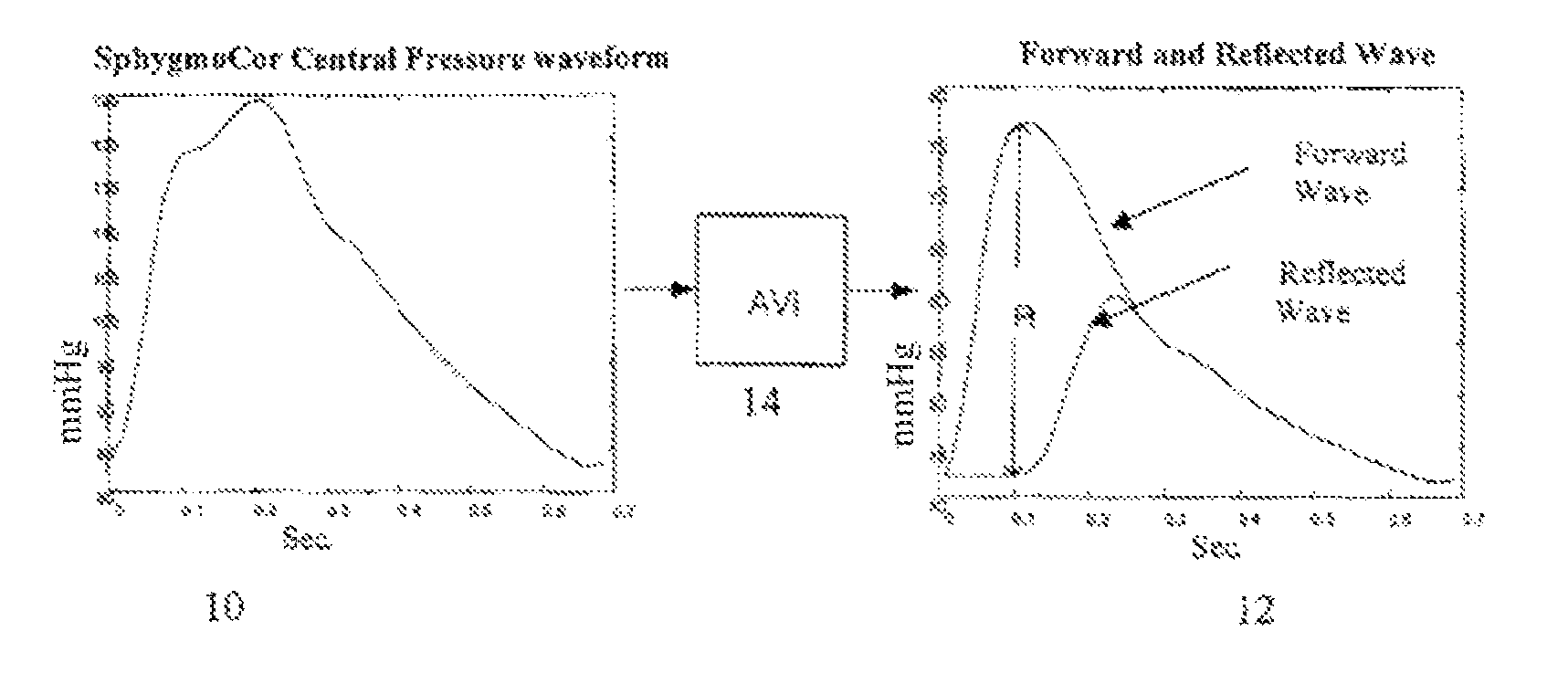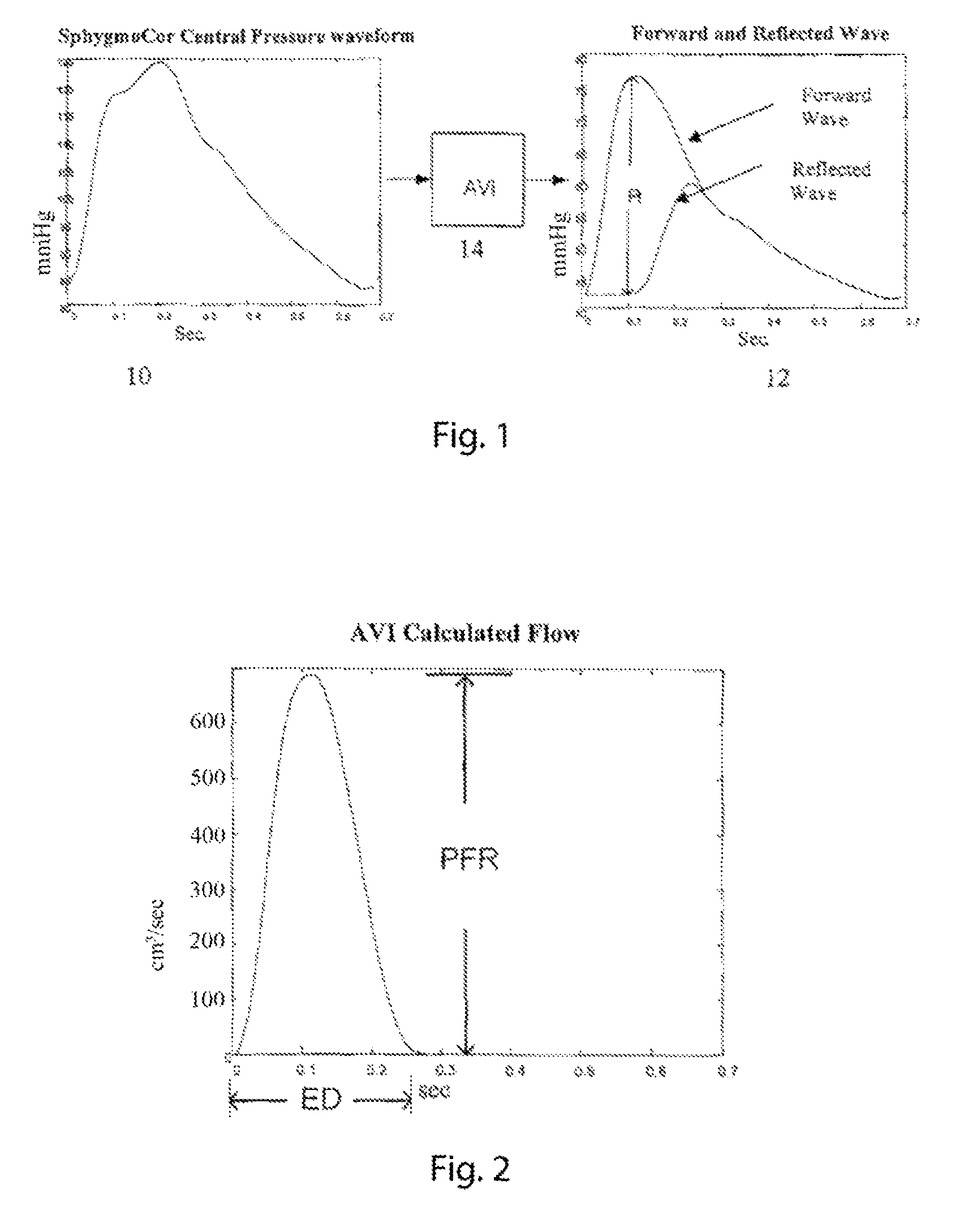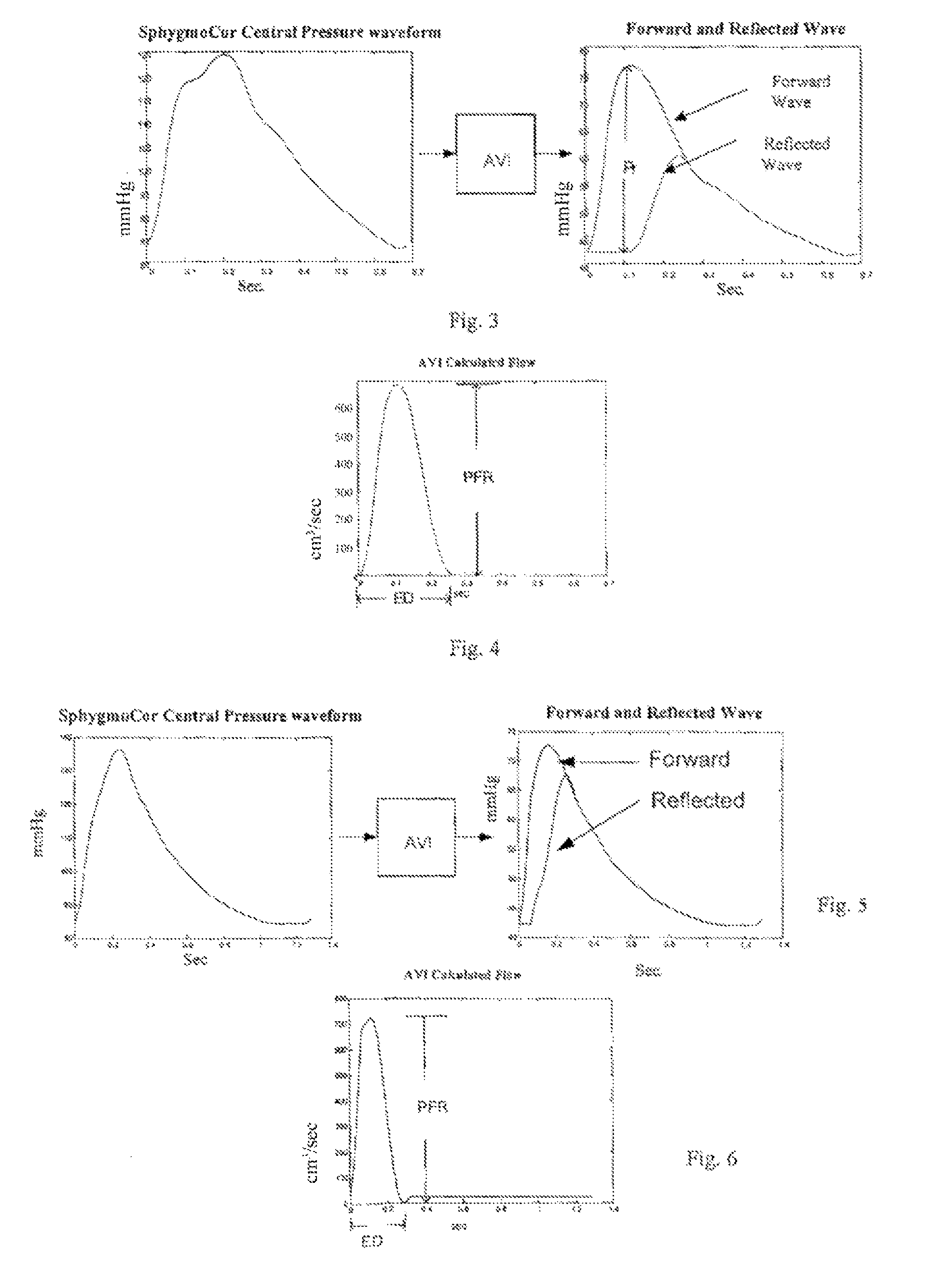Method for determination of cardiac output
a cardiac output and cardiac output technology, applied in the field can solve the problems of affecting the application of cardiac output, affecting the accuracy of cardiac output determination,
- Summary
- Abstract
- Description
- Claims
- Application Information
AI Technical Summary
Benefits of technology
Problems solved by technology
Method used
Image
Examples
first example (
see FIGS. 3 and 4 for plots)
[0086]Subject information: Male, 41 years, 178 cm Ht, 70 Kg Wt.
[0087]Data from the SphygmoCor system:[0088]ED=315 ms[0089]HR=67 bpm[0090]Sampled Frequency=128 Hz;
[0091]Results from analysis of the data from the SphygmoCor system using the method disclosed in the PWV application:[0092]P1_Height=Forward Pressure Pulse Height=Pf=22 mmHg[0093]Aortic Pulse Reflection Time=129 ms
[0094]Entered Data:[0095]Aortic Distance=311 mm
[0096]Calculations:[0097]1. Convert P1_Height to dynes / cm2:
P1_Height (in dynes / cm2)=P1_Height (in mmHg)×1.36×980
P1_Height=22×1.36×980=29322 dynes / cm2 [0098]2. Calculate Aortic Diameter in mm per square meter of body surface area (DPSM):
DPSM=(0.0654×Age)+12.63
DPSM=(0.0654×41)+12.63=15.311 mm / m2 [0099]3. Calculate Body Surface Area (BSA):
BSA=Mass0.426×Height0.725×71.84
BSA=(70)0.426×(178)0.725×71.84=18790 cm2=1.879 m2 [0100]4. Calculate Aortic diameter D in cm:
D=DPSA×BSA=15.31×1.879=28.771 mm=2.8771 cm[0101]5. Calculate Aortic Cross-sectional ...
second example (
see FIGS. 5 and 6 for plots)
[0114]Subject information: Male, 71 years, 179 cm Ht, 72 Kg Wt.
[0115]Data from the SphygmoCor system:[0116]ED=327 ms[0117]HR=47 bpm[0118]Sampled Frequency=128 Hz;
[0119]Results from analysis of the data from the SphygmoCor system using the method disclosed in the PWV application:[0120]P1_Height=Forward Pressure Pulse Height=Pf=30 mmHg[0121]Aortic Pulse Reflection Time=102 ms
[0122]Entered Data:[0123]Aortic Distance=459 mm
[0124]Calculation:[0125]1. Convert P1_Height to dynes / cm2:
P1_Height (in dynes / cm2)=P1_Height (in mmHg)×1.36×980
P1_Height=30×1.36×980=39984 dynes / cm2 [0126]2. Calculate Aortic Diameter in mm per square meter of body surface area (DPSM):
DPSM=(0.0654×Age)+12.63
DPSM=(0.0654×71)+12.63=17.273 mm / in2 [0127]3. Calculate Body Surface Area (BSA):
BSA=Mass0.426×Height0.725×71.84
BSA=(72)0.426×(179)0.725×71.84=19095 cm2=1.9095 m2 [0128]4. Calculate Aortic diameter in cm D:
D=DPSA×BSA=17.27×1.9095=32.983 mm=3.298 cm[0129]5. Calculate Aortic Cross-sectional...
PUM
 Login to View More
Login to View More Abstract
Description
Claims
Application Information
 Login to View More
Login to View More - R&D
- Intellectual Property
- Life Sciences
- Materials
- Tech Scout
- Unparalleled Data Quality
- Higher Quality Content
- 60% Fewer Hallucinations
Browse by: Latest US Patents, China's latest patents, Technical Efficacy Thesaurus, Application Domain, Technology Topic, Popular Technical Reports.
© 2025 PatSnap. All rights reserved.Legal|Privacy policy|Modern Slavery Act Transparency Statement|Sitemap|About US| Contact US: help@patsnap.com



